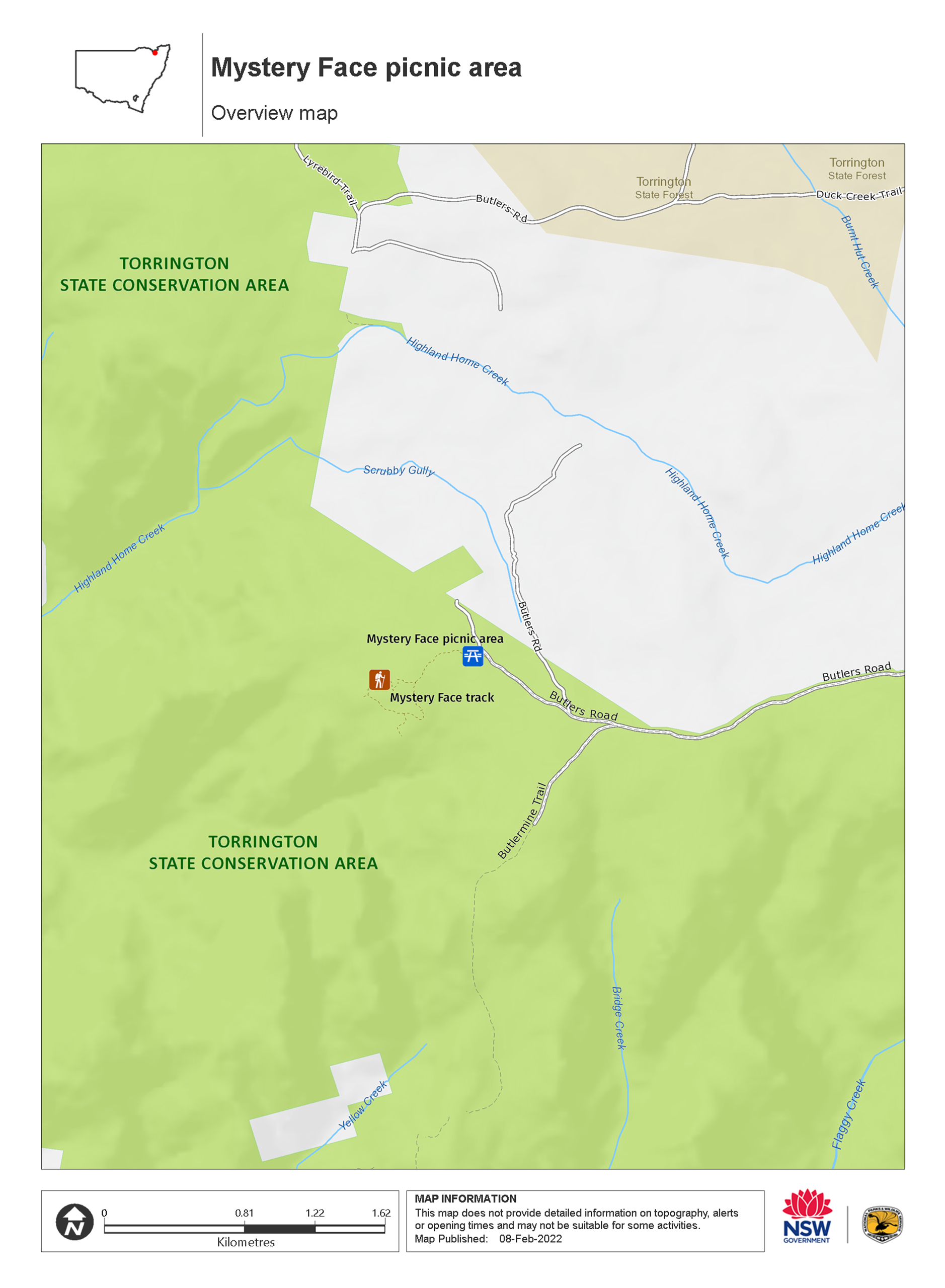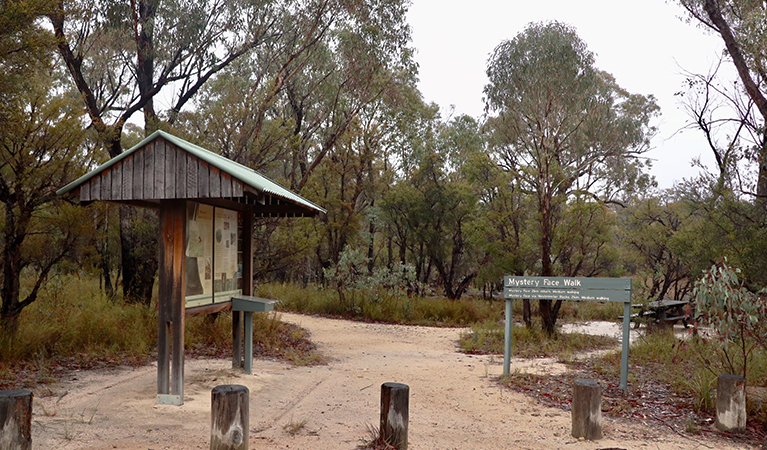Overview
Stop at Mystery Face picnic area before discovering the remarkable rock formations along Mystery Face walking track, in Torrington State Conservation Area, near Tenterfield.
Nearby
-

Mystery Face walking track
The magnificent rock formations on the Mystery Face walking track are a must-see for any Torrington visitor and great for birdwatching and springtime wildflower displays.
These maps give a basic overview of park attractions and facilities, and may not be detailed enough for some activities. We recommend that you buy a topographic map before you go exploring.
Map

Map legend

Local alerts
For the latest updates on fires, closures and other alerts in this area, see https://www.nationalparks.nsw.gov.au/things-to-do/picnic-areas/mystery-face-picnic-area/local-alerts
General enquiries
- National Parks Contact Centre
- 7am to 7pm daily
- 1300 072 757 (13000 PARKS) for the cost of a local call within Australia excluding mobiles
- parks.info@environment.nsw.gov.au
Park info
- in Torrington State Conservation Area in the Country NSW region
Torrington State Conservation Area is always open but may have to close at times due to poor weather or fire danger.
Visitor info
All the practical information you need to know about the Mystery Face picnic area.
Maps and downloads
Learn more
Mystery Face picnic area is in Torrington State Conservation Area. Here are just some of the reasons why this park is special:
Bush experiences

Take in the dramatic views, magnificent rock formations and stunning wildflowers on the many walking tracks. Set up camp at Blatherarm campground or just spend an afternoon relaxing and picnicking at the various picnic areas. And if you are an experienced bushwalker looking for adventure, why not go exploring by foot into the remote corners in the north.
- Mystery Face walking track The magnificent rock formations on the Mystery Face walking track are a must-see for any Torrington visitor and great for birdwatching and springtime wildflower displays.
- Thunderbolts lookout walking track Follow this walking track to see the spectacular 360° panoramic views of Torrington at Thunderbolts lookout. Experience the stunning wildflowers along the way.
Fabulous flowers and wonderful wildlife

This area is home to over 750 plant species, including 45 rare or threatened species like the rare Beadle’s grevillia and Torrington wattle. In fact, some plant communities thrive in the sedge-heath swamps and mole granite outcrops and can’t be found anywhere else in the world. From September to March the bush is ablaze with colour for the spectacular wildflower display. The unique climatic conditions make Torrington a haven for Australian wildlife. It’s home to 20 mammal, 135 bird, 29 reptile and 13 frog species, including threatened species like the powerful owl and the tiger quoll. You’ll probably see grey kangaroos and wallabies in the distance, and kookaburras and currawongs in the trees overhead. But if you’re lucky, you might also spot rare birds like the striking turquoise parrot and rare regent honeyeater.
- Mystery Face walking track The magnificent rock formations on the Mystery Face walking track are a must-see for any Torrington visitor and great for birdwatching and springtime wildflower displays.
- Ugly Corner Falls walking track The Ugly Corner Falls walking track is a fantastic way to get back to nature and experience the unique plants and animals of Torrington.
Land of Dreaming

Torrington State Conservation Area is a significant place for the Ngarrabul, Marbul, Bigambul and Jucumbul people. The land and waterways of Torrington, and the plants and animals that live in them, feature in all facets of Aboriginal culture and are associated with dreaming stories told to this day.
Mining heritage

Go back in time to the by-gone era of mining on the Mole Tableland when hopefuls came from as far as England and China to explore the deposits of tin and other minerals. At its peak in the 1920s, Torrington and nearby villages swelled to accommodate around 600 miners, but sharply declined in 1946 when mining virtually stopped. Try your luck fossicking for semi-precious gemstones like beryl, emerald, topaz and quartz.

